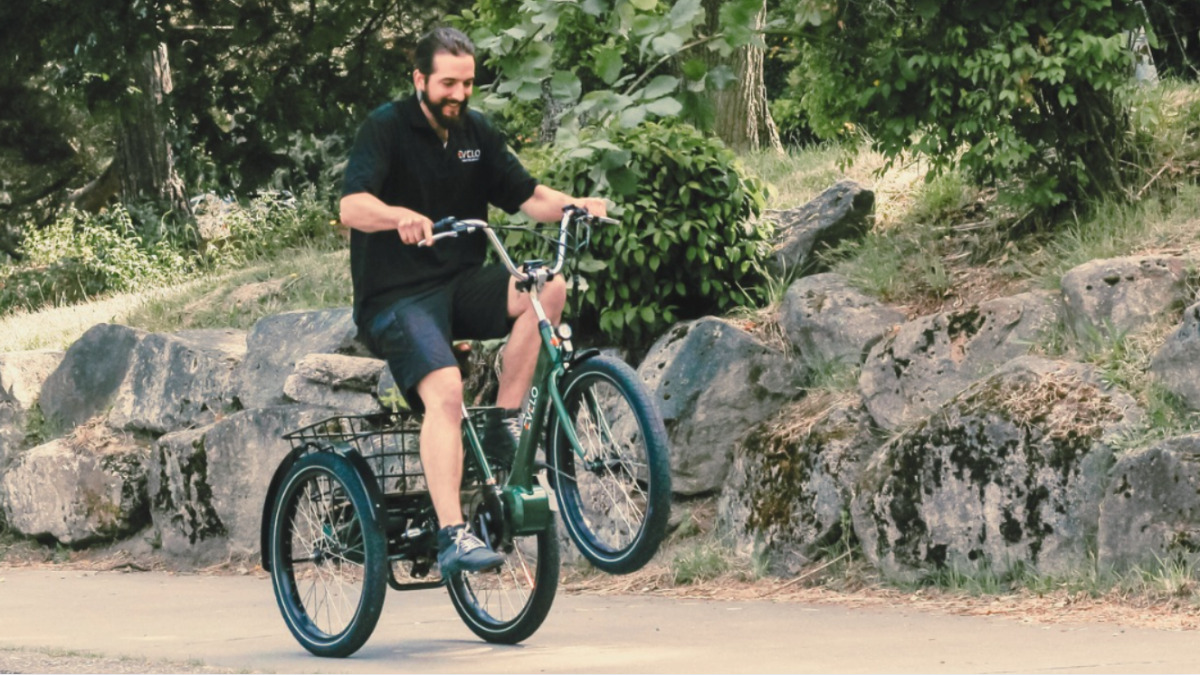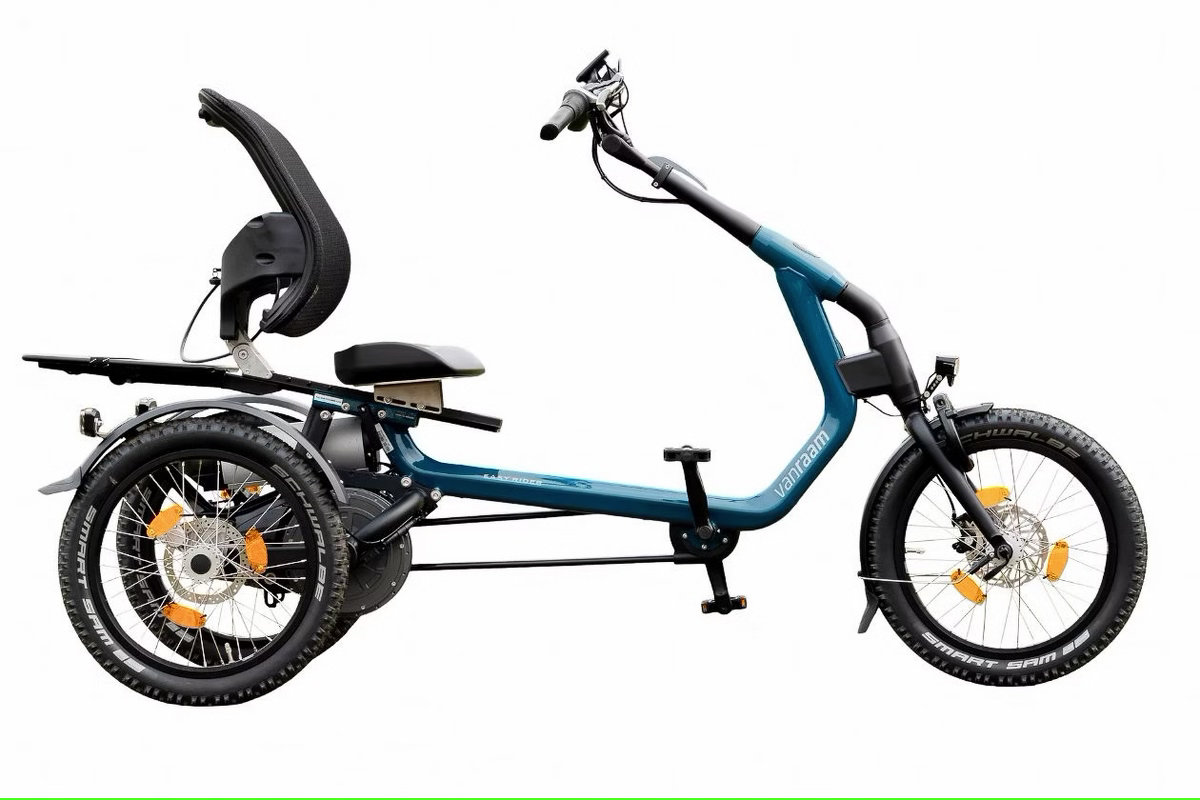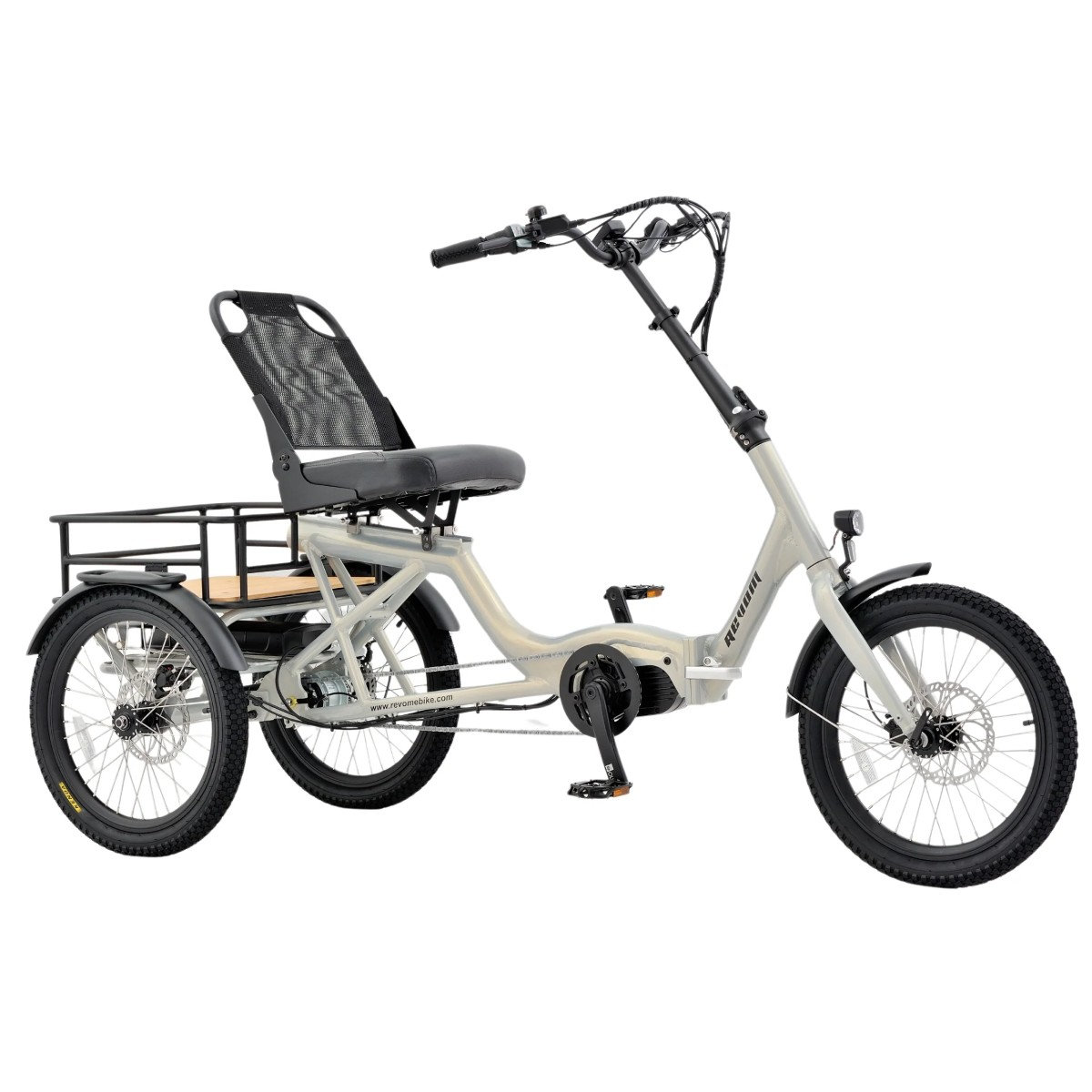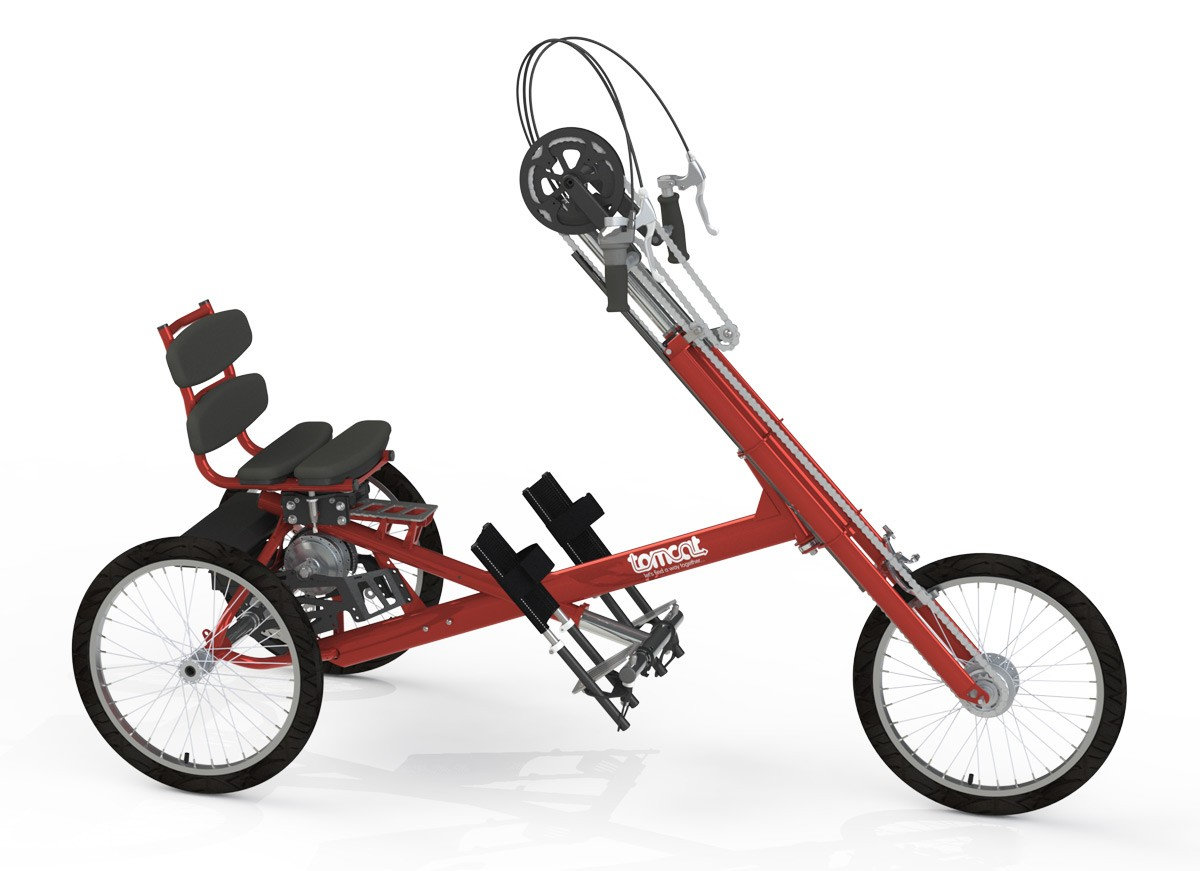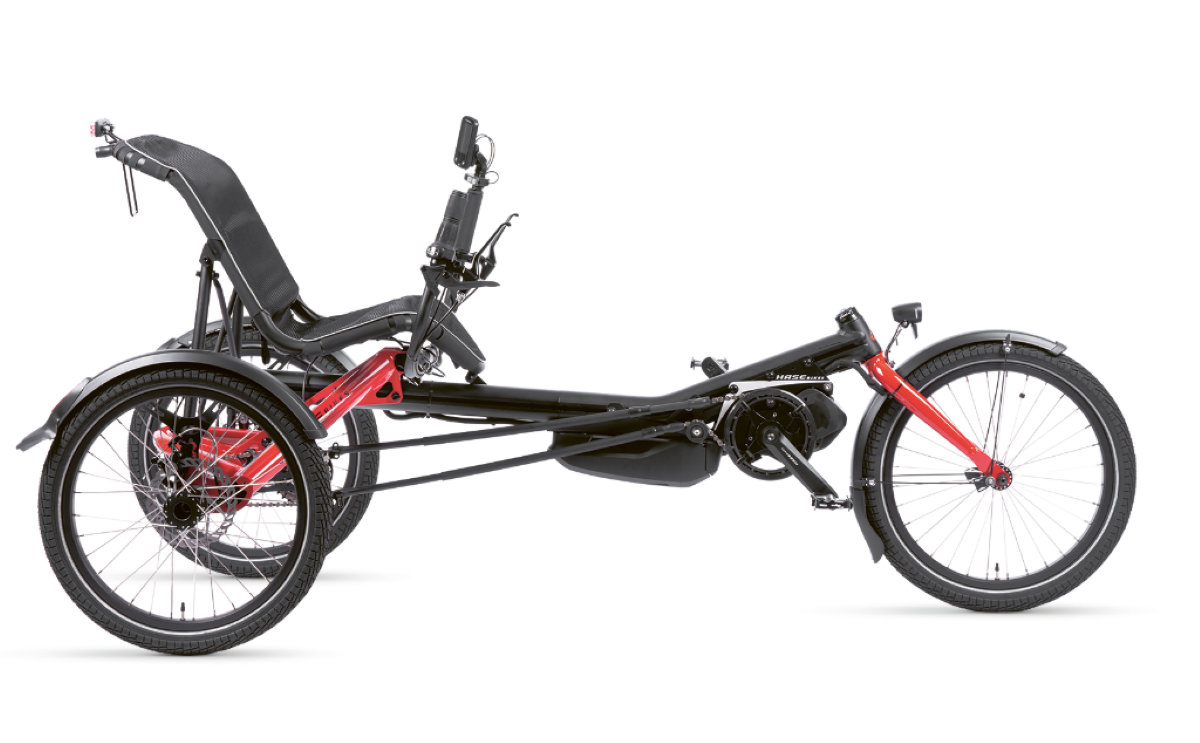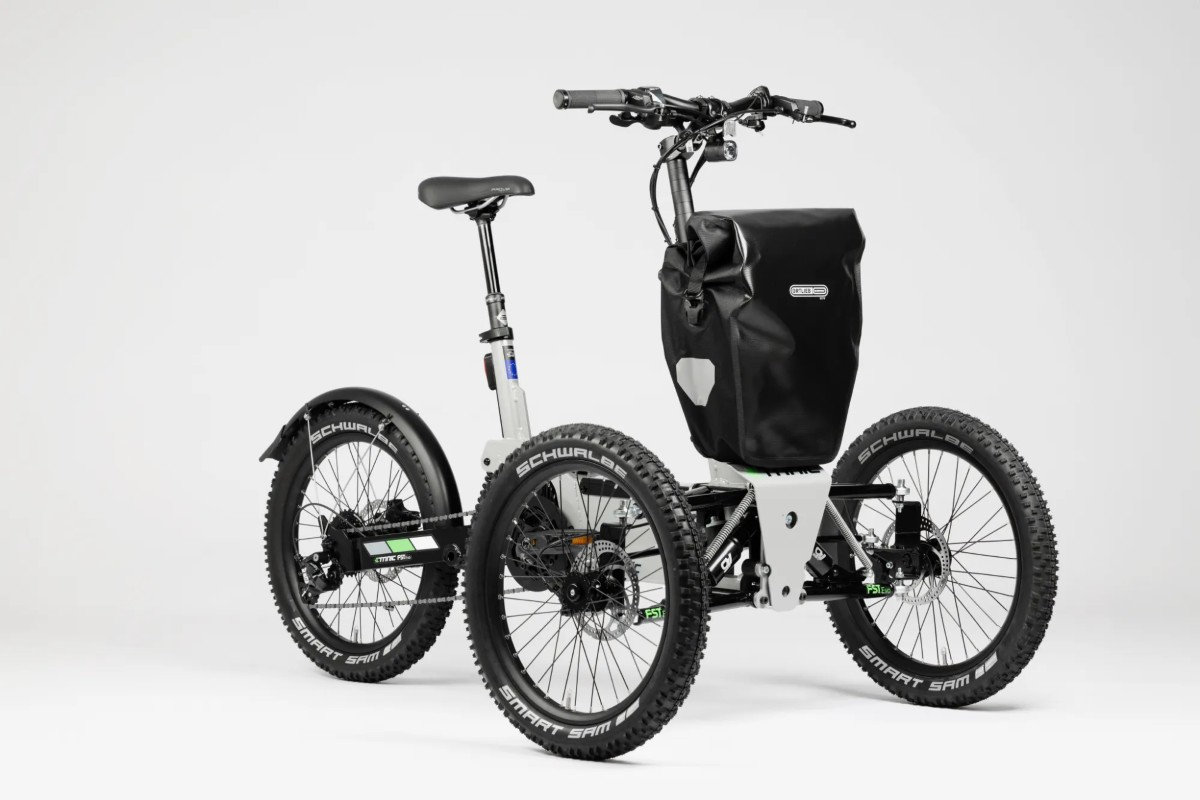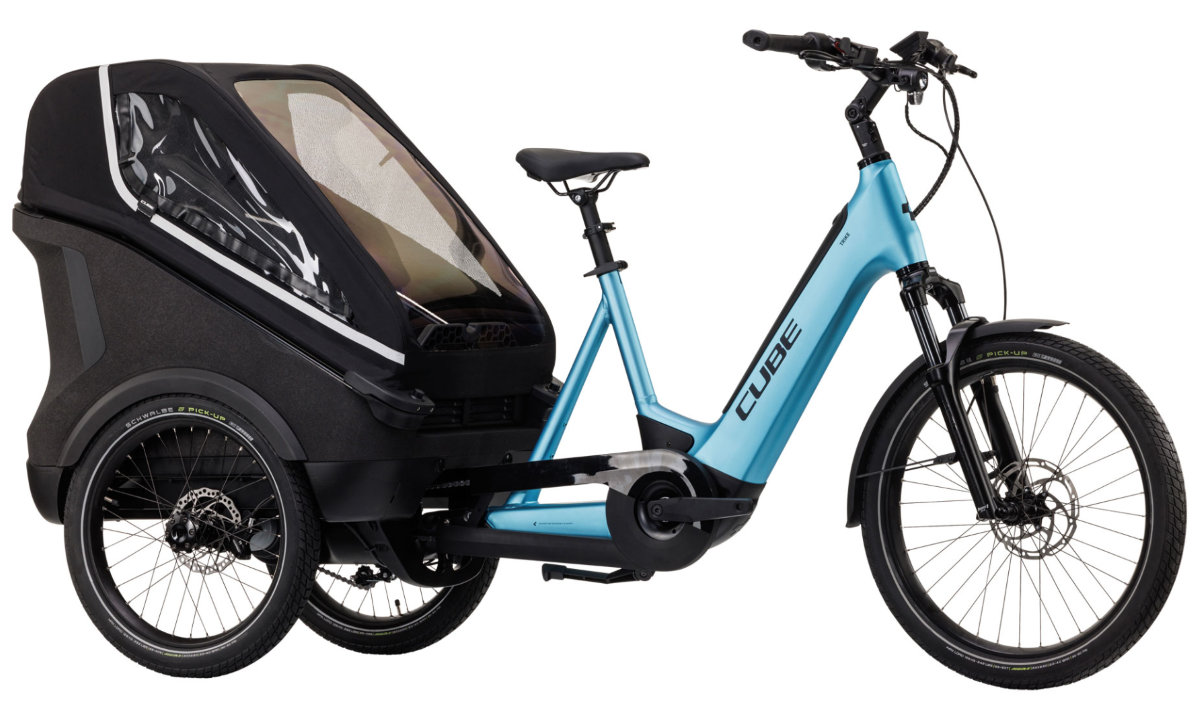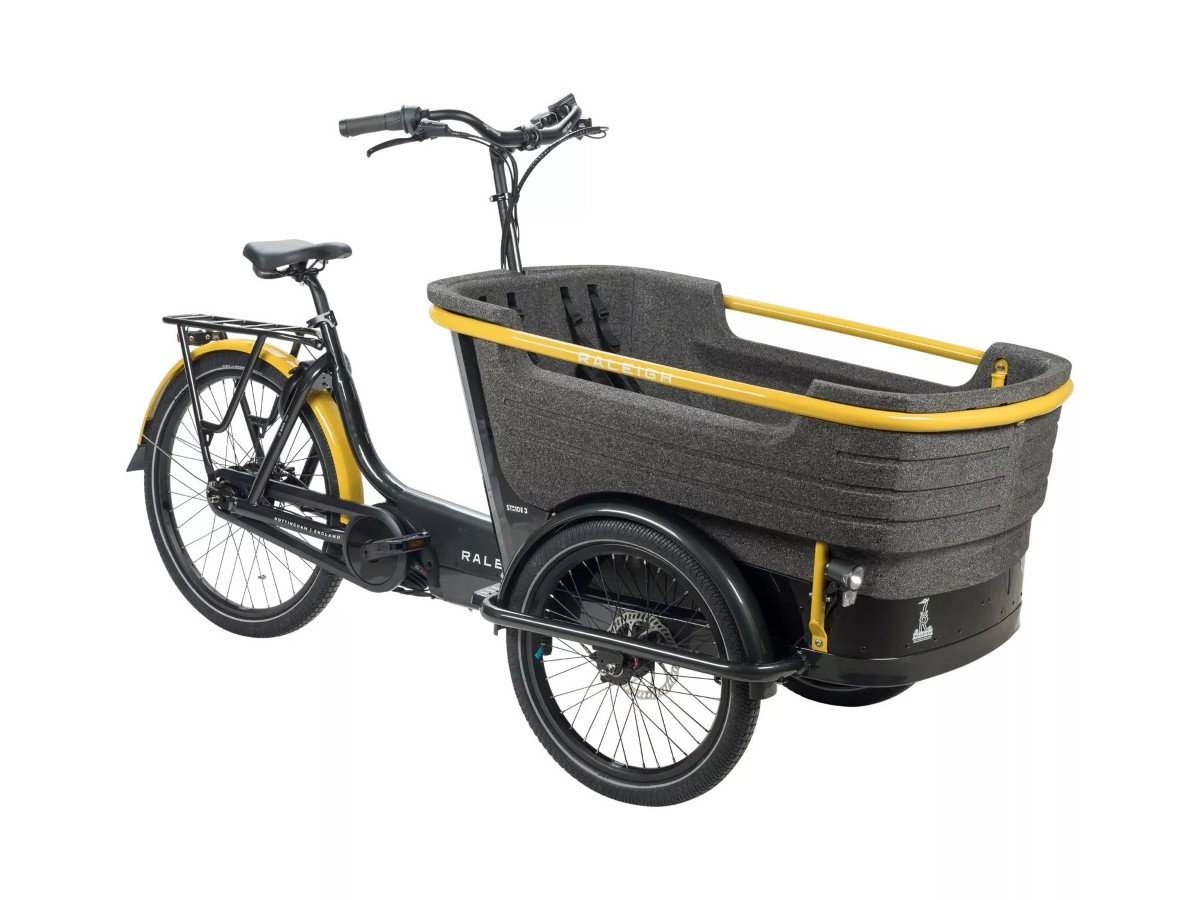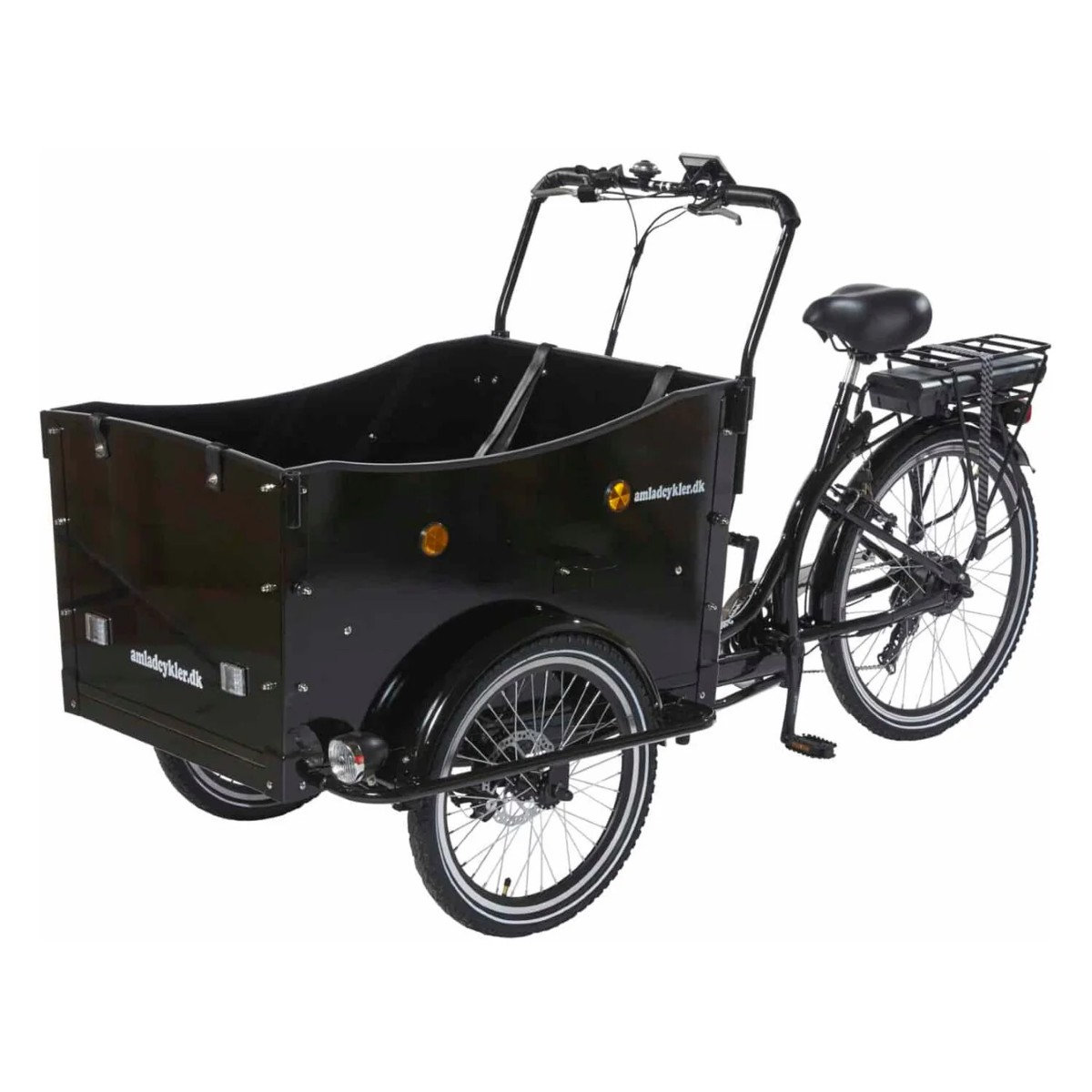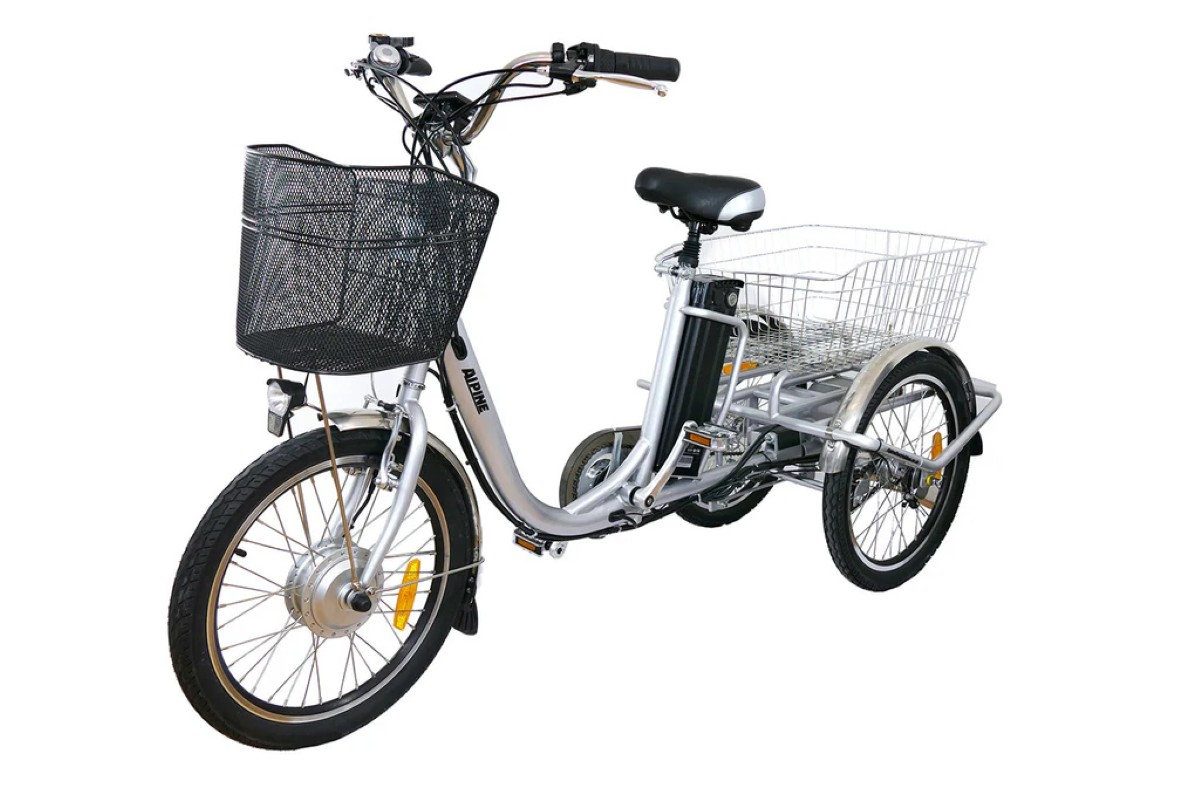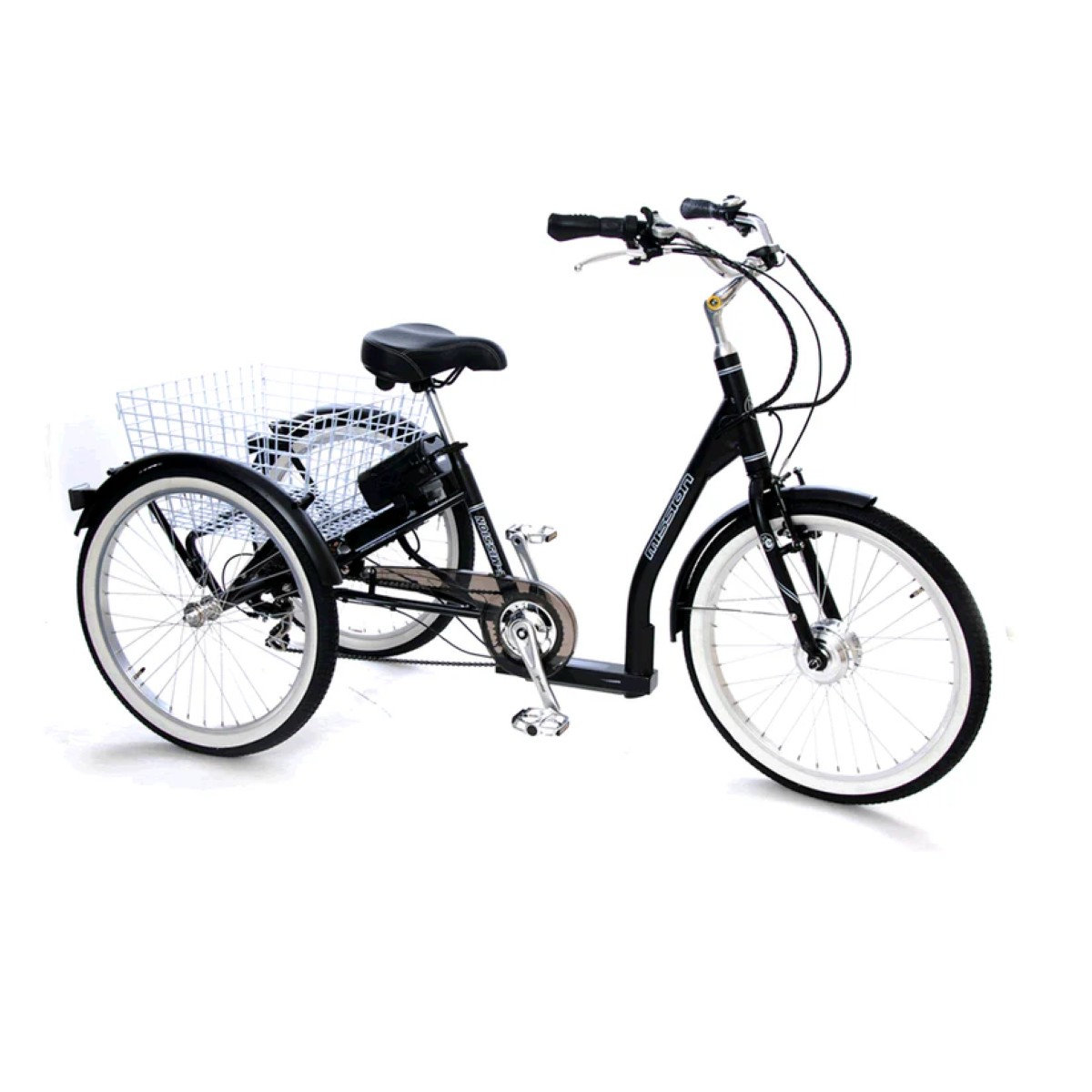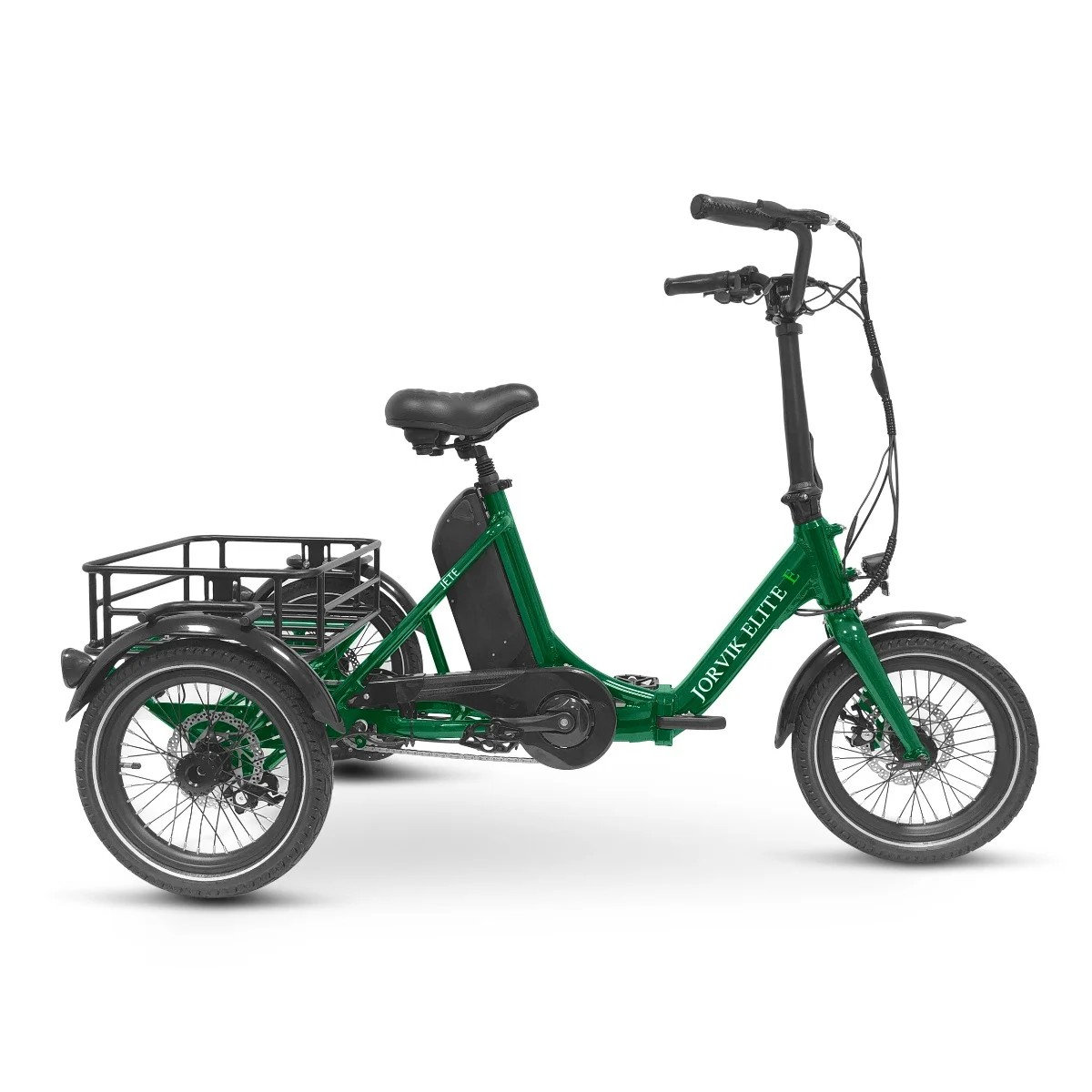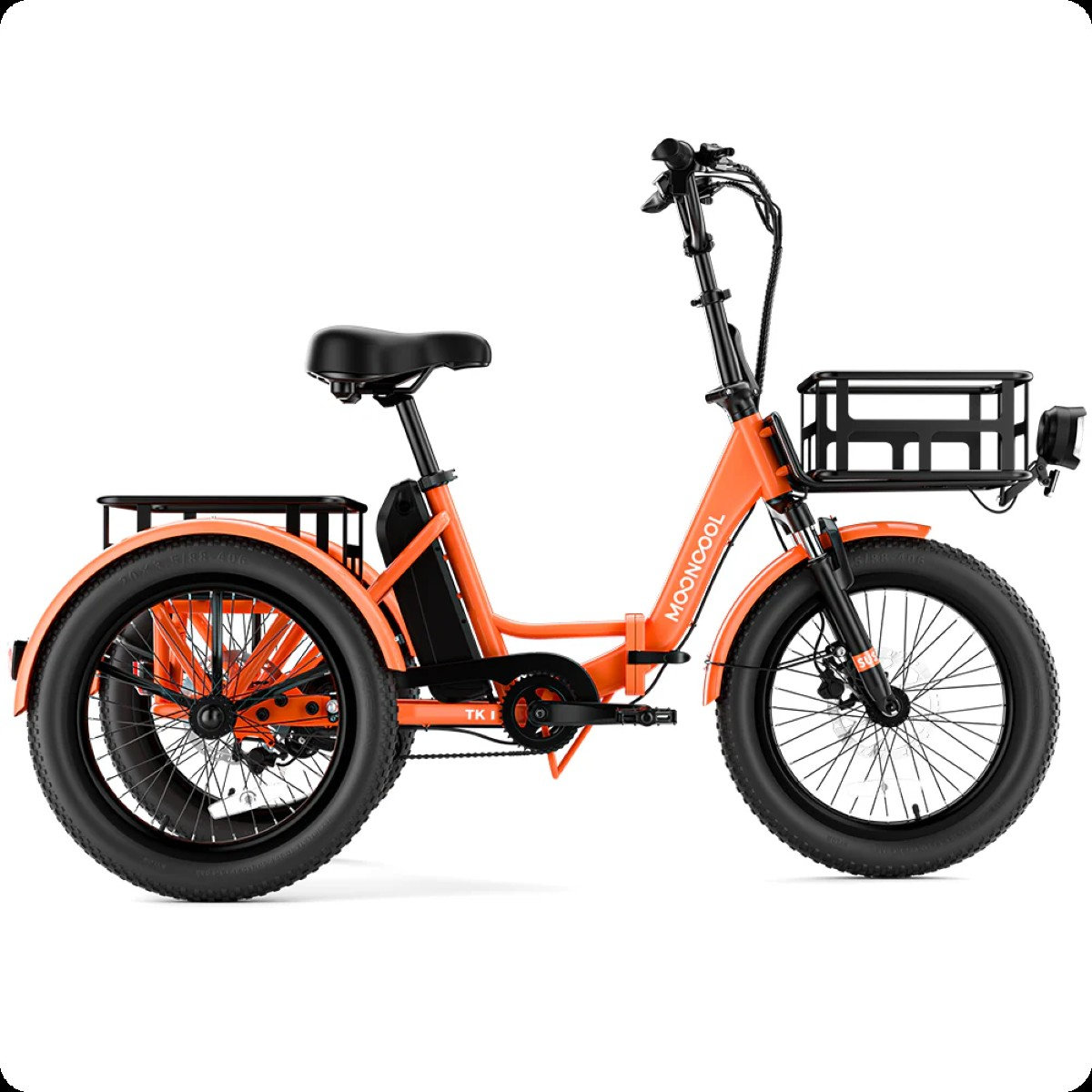Electric trikes (Accessible, Cargo, Utility): Recommendations & buying advice
Electric tricycles are quite a niche category, but there's lots of variation. Here's a selection of accessible, cargo and utility e-trikes that have caught our eye.
Key takeaways
-
Electric trikes fall into three broad categories - accessible, cargo, and utility - but there's often some overlap
-
E-trikes are more expensive than e-bikes, as there's more to them and the market is smaller
-
The stability of three wheels is brilliant for riders with balance or mobility problems
We're fiercely committed to editorial independence. To fuel us to craft expert content we use affiliate links (*) through which we may receive commission.
Benefits of e-trikes
The primary benefit of a tricycle over a bicycle is that it's statically stable, that is it stands up by itself when stationary. That's in contrast to a two-wheeled vehicle which falls over unless the rider does something about it - bikes are only dynamically stable. Why's that a good thing?
- Many people simply can't ride a bicycle due to balance problems or disability. A tricycle is accessible to a much broader range of riders
- Even if you can ride a bike, a tricycle is much easier to get on, get going, stop and get off again
- The stability of a tricycle also makes them easy to load with luggage - no kickstand required!
Key features to look for
Layout
The arrangement of wheels is not a consideration for electric bikes. They have one wheel in front of the other and if they don't then something has gone wrong somewhere. Trikes, though, have three wheels which gives two possible configurations.
Delta
The delta layout is probably the first one that comes to mind. A delta trike has one wheel at the front and two at the back. Usually the front of a delta trike is very similar to a bike, with normal handlebars to turn the front wheel to steer. The pedals will drive the rear wheels (although for simplicity sometimes only one rear wheel is driven). Most electric delta trikes will use either a front hub motor or a mid-drive, frame-mounted motor.
Delta trikes are simpler to build but don't like cornering at speed, and the widest part of the trike is behind you so it's easy to ride into things.
Tadpole
Tadpole trikes have two wheels at the front and one at the back (so, just like the eponymous larval amphibians, wide at the front and narrow at the back). In this case, the back of the bike is fairly familiar, with one wheel and a conventional bike-style transmission. Steering can either be very simple (the entire front axle swings on a central pivot) or complex, with car-style steering linkages and individually pivoting wheels. With a single, central driven wheel, a rear hub motor or mid-drive motor is the obvious propulsion choice for a tadpole e-trike.
Tadpole trikes with car-style steering inspire more confidence at higher speeds and having the widest part of the vehicle where you can see it is a bonus. The added complexity of most tadpole trikes tends to make them (even) more expensive, though.
More details on the pros and cons of the different e-trike layouts can be found in our definitive guide to e-trikes.
Riding position
Riding position refers to how you sit on a trike (or bike).
Upright
The vast majority of pedal-powered vehicles have the traditional upright riding position, as found on bikes since the invention of bikes. The rider sits on a saddle with the handlebars somewhere in front of them and the pedals roughly below them. They can move their weight back and forth, stand up for steep hills and so on. But lots of people find sitting astride a bike saddle uncomfortable, and the upright position makes bikes tall, with greater frontal area which isn't great for aerodynamics.
Recumbent
Alternatively, the rider can sit in what's pretty much a comfy armchair. "Recumbent" just means "laid back". Instead of sitting on top of and astride a bike, the recumbent rider sits more in the bike. The pedals go out in front and handlebars are either in front as well or sometimes below the seat. While standing up to pedal isn't an option on a recumbent, and their low height can be unnerving in traffic, they're much more comfortable and aerodynamic. A recumbent e-trike is pretty much the gold standard when it comes to pedal-powered transport that nearly anyone can ride.
There are also "semi-recumbent" trikes (and bikes), which are a kind of compromise between the two riding positions with the pedals more ahead of the rider than an upright without actually being out in front as on a recumbent.
Motor
While most aspects of motor choice are the same for e-trikes as for e-bikes, the question of motor location and choice of driven wheel is slightly complicated by a trike having 50% more wheels. The layout of the electric tricycle makes a key difference here. On both tadpole and delta e-trikes a mid-drive motor is the gold standard, giving efficiency benefits. But it's the most expensive option. Less expensive e-trikes will use wheel motors, usually in whichever is the single wheel. So the front wheel on a delta trike and the back wheel on a tadpole trike.
As with e-bikes, front wheel motors have the advantage of simplicity but can start to struggle with grip on steep hills. This may be exacerbated on a cargo delta trike which carries its load at the back, shifting the centre of gravity even further rearward. However, if you're choosing a trike for stability and ease of riding rather than load-carrying capacity, this will be less of an issue.
Find out more at our guide to e-bike motors.
Battery and range
We've covered most of what you need to know about batteries and range in our guide to e-bike batteries and all of that applies to e-trikes too. It's worth bearing in mind the additional weight of a trike, though, especially if you're choosing a cargo e-trike that's likely to be heavily laden. More weight means more energy needed, which means less range for the same battery capacity. Look for larger batteries on a trike than you would on a bike. Some cargo trikes have space for two batteries.
Our recommendations
While it makes sense to divide more mainstream categories (like trekking bikes) into price bands, that doesn't work so well for e-trikes. It's already a niche sector, so we've split these suggestions into utility, cargo and accessible categories. There's still a range of prices here.
Remember that most manufacturer's ranges are structured with different levels of equipment on the same frame, so if you like the look of a particular model here but it doesn't fit your budget there are likely to be very similar models for a little less and a little more money.
Accessible e-trikes
What to expect
Riding bikes should be for everyone, but some people find it difficult due to physical disabilities, learning difficulties or simply mobility challenges in old age. There a lots of adaptations that can be made to bicycles to make them more suitable, but the inherent stability of trikes give them a head-start. Here are just a few examples, but remember that this is an area of the market where customisation and one-offs are common as everyone's needs are different.
Van Raam Easy Rider
Van Raam's Easy Rider is a semi-recmbent design, making it much easier to ride than an upright e-trike but not as unfamiliar as a full recumbent. The Easy Rider is available in two frame sizes, the seat is adjustable fore and aft and has an adjustable backrest, while the steering column adjusts for length and height. So it should fit almost anyone. Behind the seat there's a small luggage platform. Comfort is enhanced by a shock absorber at the back.
With 20in wheels it's not crazily long for a bike of this type (although inevitably substantially longer than a conventional upright bike). Van Raam has designed the back end to be narrow enough to fit through doorways, which is a big benefit for storage and also useful out on the road, or indeed on cycleways protected by bollards. In its electric version the Easy Rider has a frame-mounted motor driving the rear wheels and a battery behind the seat.
Pros
- Modern looks
- Lots of optional extras (including a children's version)
Cons
- Odd mismatch of brakes (cable front, hydraulic rear)
- Heavy
Revom T4
The Revom T4 is a semi-recumbent delta trike, with a comfortable seat complete with backrest. 20in wheels and a folding frame keep the footprint small for easier storage, and it's narrow enough to fit through doorways. It's got strong utility credentials too, with a robust and spacious rear luggage crate. The seat and bars are fully adjustable and the single frame size is claimed to suit riders from 1.5m (5ft) to 1.9m (6ft 4in).
Revom has used a mid-drive motor from Oli Sport with a meaty 85Nm of torque. It drives the rear wheels via a Shimano 7-speed geared hub, which should be an efficient setup. The 720Wh battery should ensure generous range, too.
Pros
- Compact stored footprint when folded
- Big battery and torquey motor
Cons
- Seat almost directly over the back axle means the ride isn't as comfy as it could be
Tomcat Flare Hand Trike
Tomcat's Electric Flare is hand-propelled, making riding a realistic prospect for those without the use of their legs. The handlebars are attached to a crank and chain driving the front wheel, with a rear-mounted motor providing additional assistance. That's especially valuable on a hand-trike, as arms are typically less strong than legs.
The Flare doesn't fold, but it does come apart without tools. You can quickly remove the seat and split the frame in two to make the trike easier to fit in a car. As you'd expect for an adaptive e-trike, Tomcat offer a wide range of customisations and foot/leg support options to suit the needs of a range of users. The Flare's seat also rotates sideways to make transferring into or out of a wheelchair more straightforward.
Pros
- Brings riding to a much broader audience
- Tool-free disassembly for transport
Cons
- Inevitably expensive thanks to very niche nature
Tomcat Electric Flare Hand Propelled Adult Trike, from £5,645
Hase Trigo
The Hase Trigo is very much at the performance end of adaptive cycles. It's a fully recumbent delta trike with 20in wheels all round, linkage steering and a Shimano STEPS motor providing pedal assistance. The frame is essentially one long boom tube, along which the ventilated mesh seat and bars can slide to accommodate different riders from 1.4m (4ft 7in) up to 2m (6ft 7in).
With the low riding position giving a small frontal area it'll be easy to pedal the Trigo past the 15.5mp assistance limit, although some riders may find the low-slung Hase a little intimidating in traffic.
Pros
- Extraordinary levels of comfort
- Could be turned into a pretty capable mountain bike
Cons
- Hydraulic brakes all round would be an improvement
- Fully-recumbent position may take a little getting used to
Etnnic FST Evo Adventure
"Unique" is an often-misused term, but we think that Etnnic's FST EVO probably counts. We're certainly not aware of any full-suspension, electrically-assisted, off-road upright tilting tadpole trikes...
With all of this going on it's hard to know where to start, but the back end is the simplest so we'll begin there with the rear 20in wheel and 9-speed derailleur gears. The back wheel is mounted on a sprung swingarm that pivots off the main frame. At the back of the frame is a mountain bike-style telescopic seatpost to move the seat out of the way on descents. Then you've got the Bafang mid-drive motor with a huge 95Nm of torque. Ahead of that is the sizable 768Wh battery pack offering a claimed 120km of range.
Finally there's the front end, with car-style double wishbone suspension and steering uprights, hydraulic disc brakes for both front wheels and a lockable tilt mechanism that makes the FST feel almost like a bicycle. There really is nothing else like it.
Pros
- Genuinely unique
- Lots of off-road capability
Cons
- Expensive
- Only one frame size
Cargo e-trikes
What to expect
Electric cargo tricycles are designed to carry bulky or heavy loads, either inanimate things like groceries or live cargo like children or pets. Or a combination of both. The main characteristic of a cargo e-trike is a substantial load area, which may be a box (perhaps with seats) or a flat load bed. £1,500 is about as cheap as cargo e-bikes get - anything below that will have substantial compromises in one or more areas.
Cube Trike Family Hybrid
Power assistance is from a Bosch Cargo Line motor with a hefty 85Nm of torque, driving through an Enviolo continuously variable gear hub that gives you any gear ratio you need rather than working in fixed steps. There are a few variants of the Cube Trike, including cheaper models with a single battery and a cargo-specific version that does without the seats and has a higher-volume cover. If you need to carry even more stuff there's an optional front carrier and frame bags too.
Pros
- Tilting mechanism for a more familiar ride feel
- Versatile load bay with removable seats
Cons
- Very expensive (but could easily replace a car!)
- Widest part of the trike is behind you, which takes some getting used to
Raleigh Stride 3
Raleigh's Stride 3 is a tadpole e-trike, with the high-density foam cargo/passenger box swinging from the front of the main frame. It's the simplest way to make a tadpole trike but it takes a little getting used to as it doesn't steer anything like a bicycle. You need to take things steadily. That front box has a weight capacity of 100kg and four belted seats for small children. A rear rack is included for even more capacity.
The familiar Bosch Cargo Line motor provides power to get you and your load up the hills and the 525Wh battery also powers the integrated lights. Triple hydraulic disc brakes bring things to a halt. Slightly oddly, you get mudguards included but a rain cover for the cargo/passenger compartment is an optional extra - we'd say it's pretty much a must in the UK!
Pros
- Loads of space and capacity, including four belted child seats
- Mudguards, lights and a built-in lock included
Cons
- Simple pivoting tadpole layout gets interesting at speed
- Rain cover an optional extra
AMCargobikes Electric Cargo Trike
Tadpole cargo trikes aren't unusual in Denmark, from where the AMCargobikes Electric Cargo Bike hails. It's the most traditional-looking of our suggestions, being essentially the same design as unpowered Danish trikes but with the addition of a rear hub motor and a battery on a rear rack. You'll find a simple pivot under the front box to facilitate steering, which works fine at sensible speeds but needs care in corners. The angular box isn't as refined as more expensive options but this bike costs a third of what the Cube and Raleigh offerings do, so some compromises have to be made. The box still has seatbelts for four children and you do get a rain canopy included too.
There isn't space in this budget for hydraulic disc brakes, but you still get three brakes - cable-operated discs at the front and a rim brake at the back. The cheapest version of this trike has a 370Wh battery but you can pay a little more for 430Wh or 500Wh options.
Pros
- A very affordable way into cargo e-trikes
- Rain cover, lights and mudguards included
Cons
- Rear hub motor less efficient than mid-drive options
- Cable brakes will need more maintenance than hydraulics
Utility e-trikes
What to expect
Utility e-trikes are general "getting around and doing things" trikes, rather like trekking e-bikes but with the stability benefits of three wheels. They can't carry as substantial a load as a full cargo e-trike but they're also considerably more compact.
Alpine Tilt
While not as capacious as a full cargo e-trike, the Alpine Glide can still carry a fair volume of stuff thanks to front and rear baskets. It's a delta trike but the distance between the rear wheels is quite small, giving it a narrower profile that's useful both on the road and for storage. The front end of the Glide can lean slightly each way for a more reassuring riding feel for anyone coming off a bicycle.
Pedal assistance comes from a front hub motor powered from a 470Wh battery tucked down behind the seat. With small wheels and a step-through frame, the Alpine Glide is low to the ground and very user-friendly. The transmission is a little convoluted, with a chain running from the cranks to the rear axle, a layshaft across to the wheel and a second chain driving a 3-speed geared hub on the left.
Pros
- Tilting mechanism gives a reassuringly familiar ride feel
- Narrow rear track for a smaller footprint
Cons
- Front wheel motor may find its limits on hills
- Not the highest level of equipment considering the price
Mission e-Mission
Mission's e-Mission is a powered version of one of its existing adult tricycles. It's a delta e-trike with a front hub motor. At 460Wh the battery isn't huge, but you should still get 30km (20 miles) on the highest power setting which is ample for errands. There's a big, easy to load basket at the back.
Mission has aimed for ease of use with the e-Mission. With a step-over height of just 200mm (8in), the e-Mission is very easy to get on and off, and the wide, swept-back handlebars fall easily to hand. If you need them, Mission offers various optional extras like a back rest, side seat supports and self-levelling pedals available to suit the needs of riders with disabilities.
Pros
- Extra-low frame and swept bars make for a user-friendly riding position
- Optional accessibility adaptations for riders with disabilities
Cons
- A front disc brake would be a reasonable expectation at this price
- Smaller battery compared to models higher up the range
Jorvik Elite Jet E16
Specialist tricycle manufacturer Jorvik has an extensive range of three-wheelers, but the JET-E16 stands out as a super-compact, easy to store option. Not only does it have small 16in wheels but the frame and bars both fold, considerably reducing the trike's footprint. It's less than a metre long when folded, which makes it much easier to store or transport (although at 31kg you'll need a hand to lift it into a car).
The JET-E16 has an interesting drive mechanism, with a Bafang rear hub motor mounted on the frame halfway between the pedals and the rear axle, so it sits in the frame rather than in a wheel. An extra chain runs from the motor to the rear axle, driving both rear wheels through a differential gear for easier cornering. A sturdy storage basket at the back gives ample carrying capacity and you even get a waterproof bag to sit in it.
Pros
- Small wheels and folding frame and fork for easy storage
- Choice of six colours!
Cons
- Less comfortable ride than a larger-wheeled trike
Jorvik Elite Electric Folding Travel Tricycle JET-E16, £3,149
Mooncool TK1
Mooncool's TK1 conceptually similar to Jorvik's JET-E16. It also has smaller than usual wheels, although at 20in they're bigger than the Jorvik's 16in. It also folds for a smaller footprint, although the bigger wheels mean it doesn't get as small. The upside is a comfier ride on uneven surfaces, especially since the wheels are shod with chunky, high-volume tyres and there's a suspension fork at the front.
Similar to the Jorvik JET-E16, the TK1 uses a hub motor adapted to sit in the frame, with one chain running from the pedals and a second chain running back to drive the rear axle. There's only one gear on the TK1, though, so you'll be relying on the motor assistance quite early on. The TK1 also has a centrally-mounted hydraulic disc brake at the back to complement the one at the front.
An unusual feature is the integrated rear light and indicators, although they're of marginal utility given how close together they are. More useful is the integrated front light and sturdy front and rear luggage baskets. There's an impressive load capacity of 205kg.
Pros
- Decent specification for the money
- Chunky looks and plenty of space for luggage
Cons
- Chunky wheels and suspension add up to a hefty weight
- Only one gear
Buying tips
- Think carefully about what you're going to use your e-trike for and any particular needs that you have. This is a broad category with a lot of variation within it.
- If you're looking for an accessible or adaptive trike for specific disabilities, talk to one of the specialist dealers -- there are lots of customisation options.
- Make sure you've got somewhere to store an e-trike, as even the small-wheeled folding models take up more space than a bike.
Frequently asked questions
Are trekking e-bikes heavy?
Because trekking e-bikes include a full suite of practical accessories and usually have large (and somewhat robust) tyres as well as suspension forks and generous battery capacity, they're not the lightest e-bike option but that's the trade-off for practicality and versatility. As ever, the more you spend the lighter they get. If you don't need to carry your e-bike upstairs or load it onto a car rack then weight is less important.
What's the difference between a trekking e-bike and a hybrid e-bike?
Not much, really. They're both terms that apply to a bike that's a halfway house between an off-road specific mountain bike and a smooth-surfaces-only urban bike. European manufacturers tend to call them trekking bikes, UK and US manufacturers tend to call them hybrids. That said, the term "hybrid" is often applied to more stripped-down, performance oriented bikes without all the practical accoutrements of a trekking bike. Your best bet is to choose on features rather than what the manufacturer chooses to call it!
Can I go cycle touring on a trekking e-bike?
Absolutely! Trekking e-bikes are happy on a range of surfaces and are equipped to carry luggage out of the box. Add a pair of pannier bags and maybe a handlebar bag and you're good to go!
Summary
The e-trike category is, in some ways, not really a category at all. About all that these electric tricycles have in common is that they have three wheels. They're all pitched at different riders with different needs and different budgets. While that's potentially confusing, the upside is that whatever e-trike you need almost certainly exists somewhere!

